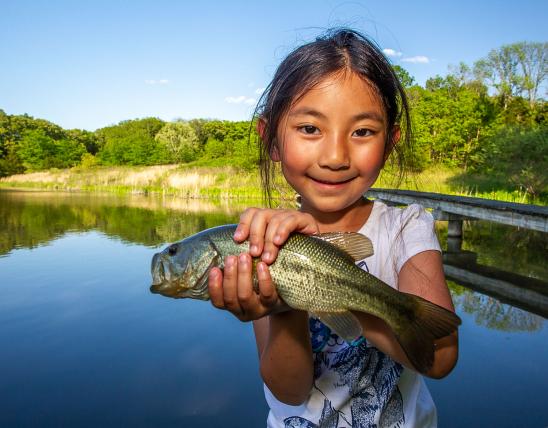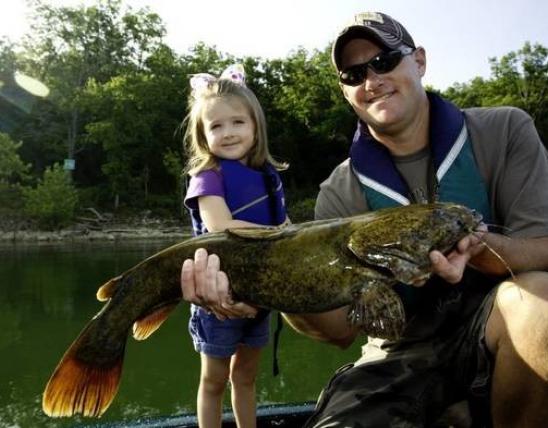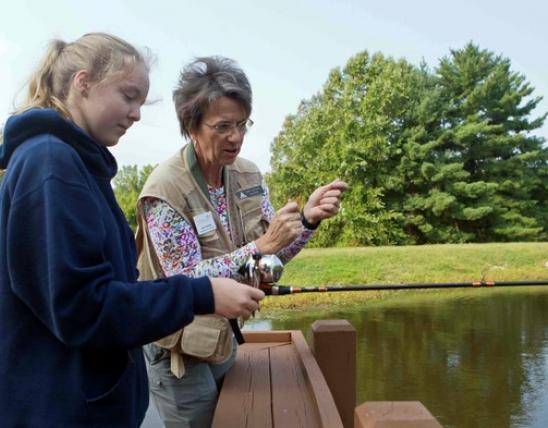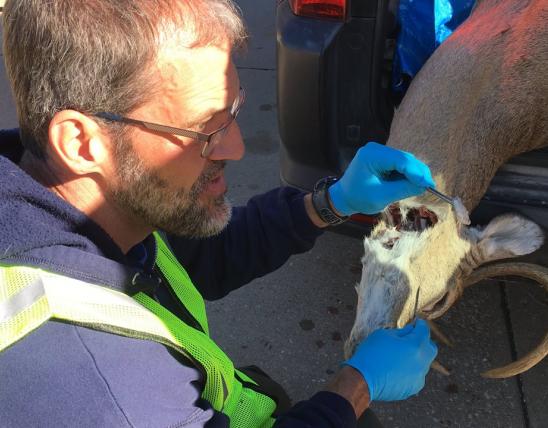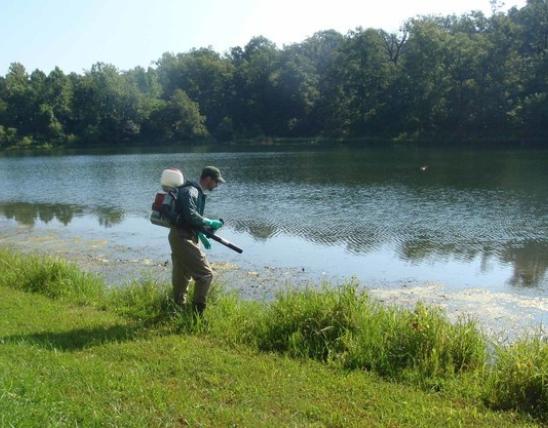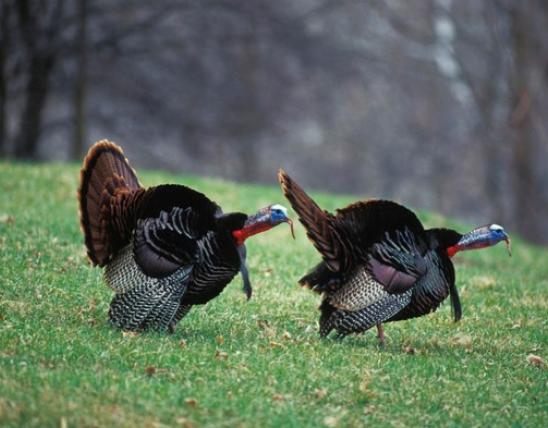Ask a Waterfowl Hunter
Current waterfowl hunters are the best resource when getting started. They have the experience to clue you in on many of the dos and don’ts of the sport. They may even offer to take you along with them to their favorite hunting spot! Ask lots of questions.
Where to Hunt
If you cannot find private ground to hunt on, there are 15 intensively managed wetland areas in Missouri managed by the Department of Conservation that allot hunting spots by a morning drawing. Get more information about the waterfowl draw.
Many other public conservation areas across the state allow open waterfowl hunting without a reservation.
When to Hunt
Strong cold fronts that dip over the northern prairies where ducks and geese breed are the best time to go looking for waterfowl on the move, migrating south. Cold fronts usually bring a weather change with rain or snow — these are what most folks believe to be perfect “duck days.” Oftentimes, the day after a front has passed through, the weather is marked by blue skies, cold temperatures, and a strong north wind. These too are often great days to waterfowl hunt.
Learn the Basics
Title
Scout! Scout! Scout!
The key to good waterfowl hunting is knowing where the ducks will be and what areas they use — this makes scouting very important. Check local ponds, lakes, wetlands, or even crop fields for areas that ducks and geese use. Here are some ideas on where to scout for ducks:
- There are quite a few small wetlands on conservation areas that provide waterfowl hunting opportunities. These areas can be effective with a small number of decoys in the right circumstances.
- Look for ducks on local ponds for jump-shooting opportunities.
- Don’t overlook larger ponds that often attract geese and ducks.
- Both ducks and geese feed in crop fields; spend time early and late in the day to watch where ducks are feeding and then seek permission to access the fields.
- Sometimes large reservoirs hold ducks, especially during peak migration days or when small wetlands freeze. This may be an opportunity if you have a boat available, or can access the right areas from the shore.
Remember to always ask permission before entering private property.
Title
Hide!
There are a variety of waterfowl hunting blind options, depending on what type of habitat you’re hunting. The main point to keep in mind when hiding is to avoid movement.
- A simple marsh blind can be constructed from a few cattle panels covered with local vegetation.
- Layout boat blinds are popular for field hunting and allow you to lie down to conceal yourself underneath natural or synthetic camouflage vegetation until it’s time to sit up and shoot. Layout blinds are also a good way to be portable if the ducks aren’t using your spot and you need to move.
- In the right conditions, you can just lean against a tree or squat down in the cattails with no blind. Wear camouflage, keep movement to a minimum, and remember to cover your face so it does not shine while looking up at working ducks.
Title
Guns and Ammunition
Ducks can be taken by a variety of shotguns and different shot sizes. Remember that you may be hunting birds that range from one to two pounds, like teal, to a Canada goose that can weigh over 15 pounds. A 20- or 12-gauge shotgun can be used for waterfowl. A 12-gauge is generally the standard among most duck hunters. Ducks and geese are tough, fast moving targets and the larger gauge is generally more effective. If recoil is a factor or you are fairly certain you will be shooting ducks at close range over decoys, a 20-gauge may be an effective alternative.
Remember that all ducks and geese can only be hunted with nontoxic shot, and possession of lead shot is illegal. Steel is the most common type of nontoxic shot used for waterfowl hunting. Steel shot sizes ranging from #4 to BBs are common waterfowl loads. Steel shot patterns differently than lead shot, or has a different spread when it leaves the shell. Be sure to pattern your shotgun with the loads you will use to determine which choke you should use for your particular gun and shot size.
Title
Decoys
Decoys are a major investment for a beginner. Sometimes you can find used decoys for sale online, in the newspaper, or by word of mouth. Ask some other duck hunters if they have old decoys they would be willing to part with — if they are upgrading, they may make you a deal.
Duck decoys can be bought in all different species, but the most common are mallard decoys. They usually work well for most dabbling duck species. When hunting deeper water for diving ducks, the white coloration on many diver decoys is effective on these large bodies of water.
The number of decoys that you need varies dramatically depending on the hunting situation. In a small wetland that you have seen ducks using, you can often get by with a one to two dozen decoys. On large bodies of water where there is competition from other duck hunters, it is not uncommon to see spreads of 10 or more dozen decoys, and some snow goose field spreads often use up to 1,000 decoys.
Title
Clothing and Waders
Wear Warm Clothing
Hunkering down and waiting for swarms of ducks can get chilly, especially if you’re not in an airtight blind or braving nasty, duck-friendly weather. Unless unseasonably warm, wear or bring extra layers with you. Remember not to wear your warmest clothes when heading out across the marsh. You may have to slog through the muck or walk long distances, and your sweat will chill later when you’re sitting still in the cold.
Waders
Waders can range from fairly inexpensive to expensive, and there are many different styles. Again, do some research and ask other hunters which waders they think work best.
Chest vs. hip boots — the choice depends on where you're going to be hunting and how deep the water is. Scouting the area is key for learning the water depth you're going to encounter. Overall, chest waders are much more versatile — it’s no fun to be caught in water higher than your hip boots, especially in cold weather. If you are tromping through water deeper than hip boots during cold fall and winter months, you may want to invest in a pair of insulated neoprene waders.
Title
Calls
There are many different types that range from $20 to hundreds — start out with a call that you can afford and practice, practice, practice! There are many online videos, DVDs, and other resources available to help you along.
The best way to learn how to call is to go to a marsh in the spring or fall and listen to the real ducks. Take your call and try to imitate them. Concentrate on a few basic quacks and a feeding chuckle to get you started — do not overcall.
Listen to flocks of waterfowl and note how much they call. That’s what you should imitate. Your calling should help waterfowl locate your decoys. Once accomplished, any more calling, if at all, should be limited.
Title
Retrieving Dog
Talk to any serious waterfowler who has a retriever and you will hear that watching them work is one of the most enjoyable parts of the hunt. A well-trained dog retrieving ducks by commands or whistles is fun to watch — and retrievers are a valuable asset in finding crippled game.
If you don’t own a retriever and can’t pick up your ducks yourself, often you can use a fishing pole with a top water plug to retrieve them. If on a small contained body of water, let the wind blow them into the shore — but don’t lose track of your game or lose count!
Title
Practice Wing Shooting
Shooting practice is important when heading out to the marsh. Practicing with clay pigeons and a thrower helps you with aim and consistency. Remember to aim in front of your target when they are flying so that you can make a clean kill.
According to the Wildlife Code of Missouri and out of respect for the animal, hunters “who kill or injure any wildlife shall make a reasonable search to retrieve the wildlife.” If you knock down a bird grab your retriever and gun (you may have to shoot again) and make passes where you saw the bird go down. Remember that you must make efforts to retrieve the bird before giving up or going back to the hunt.
The Department offers free Effective Wingshooting Trainings across the state several times a year. For information about these trainings in your area, call your local Regional Office. Contact information can be found at http://mdc.mo.gov.



